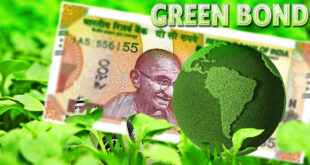- The fact that the multipolar international system is fast unfolding is reinforced by clear trends in polycentric global geoeconomics.
- There is significant trade within the Global South; currency swap agreements; trade in national currencies bypassing the dollar; steps towards trading oil and gas in national currencies; the promotion of such arrangements by regional organisations; the setting up of special accounts for internationalising national currencies; and the setting up of financial communications systems.
- Countries outside the West say they are operating in a multipolar system and are developing mechanisms for alternate currency exchanges to reduce risks and their dependence on the dollar.
- Trade wars against China since 2018 have set China on this path. The Russia-Ukraine war has hastened this development since Russia trades oil and commodities in ruble and national currencies, in a model similar to the rupee-rouble trade of earlier years.
Economic diversification
- The steady but unequal growth of the ‘emerging economies’ is the base for economic diversification. For example, the combined GDP of China, India, Russia, South Africa, Indonesia, Brazil, Iran and Turkey exceeds that of the G7.
- Inter-Asian consumption is driving high levels of trade between Asian countries. India’s trade with Asian countries is higher than with the West.
- China’s trade with Asian countries more than doubled in the last few years, beating its trade with the West. The UAE, Iran, Turkey, Indonesia, Sri Lanka, Myanmar, Thailand, Malaysia and Indonesia are trading in local currencies with regional partners.
- Bilateral currency swaps among ASEAN countries, China, Japan, South Korea are $380 billion and rising. Similarly, the South African rand is used by several African countries. The Latin American countries are moving towards greater inter-regional trade.
- With high exchange rates of the dollar, emerging economies have initiated trade in national currencies bypassing the dollar.
- Asian central banks have over $400 billion of local currency swap lines and trade amongst themselves. Since 2019, India has been paying Russia for fuel, oil, minerals and specific defence imports in rupees on an informal basis.
- It has worked out local currency trade with the UAE, Japan, Turkey, Korea and South Asian countries.
- In July 2022, the Reserve Bank of India (RBI) unveiled a rupee settlement system for international trade by allowing special vostro accounts in designated Indian banks, a step towards internationalising the rupee.
- China developed the Renminbi in 2015 and offers clearing and settlement services for participants in cross-border yuan payments and trade.
- The yuan is being internationalised as the International Monetary Fund has given it Special Drawing Rights status in the currency basket. Russian banks have started using the China-based Cross-Border Interbank Payment System for international payments, as they are debarred from the SWIFT international system.
- The BRICS’s New Development Bank encourages trade and investment in national currencies by disbursing up to 50% of its loans in national currencies since 2015.
- Other regional groupings such as the Shanghai Cooperation Organization and Eurasian Economic Union and partner-countries of the Regional Comprehensive Economic Partnership are setting up processes to conduct trade, investments and settlements in national currencies.
- The process of creating a common payment infrastructure and connecting national systems for the transmission of financial information is being put in place.
- A serious challenge to the petrodollar comes from moves to trade oil and gas outside the dollar zone.
- This move can cut into the monopoly of the dollar that the U.S. has since the 1970s. But while many oil producers, refiners and buyers such as Russia, India, China, Venezuela and Iran have initiated trading hydrocarbons in national currencies, this process is yet to achieve full force. India’s vostro accounts enable rupee payments for Russian crude and, as former RBI governor D. Subbarao said, India can save up to $4 billion a month in forex outgo. China is using the yuan-ruble route for Russian oil since 2020. China is in talks with Saudi Arabia and the Gulf countries to trade oil in yuan.
What this means
- First, despite speculation, there is no move towards de-dollarisation. The challenge for national currencies is that these are not fully convertible.
- Thus, despite the rise of alternate systems of trade, and multiple currency circulation systems, the dollar still dominates.
- Further rocking the dollar boat will expose these countries that have trillions of dollars as reserve currency. Second, the dollar makes up 60% of the global currency, the euro 20%, the yen 5.8% and the yuan 3%. To make an alternate system operational requires a longer and sustainable effort.
- Third, the diversification of national currency in trade is increasing. Trade and buying food and oil in national currencies gives countries outside the collective West options that were not available earlier.
- In the contemporary international system, nation states of the Global South are determined to choose their own allies.
- In this environment geopolitics and geoeconomics are merging, and new supply chains and alternate currency chains are enabling dual/multiple circulation systems. This is the material basis of the multipolar system.
SOURCE: THE HINDU, THE ECONOMIC TIMES, PIB
 Chinmaya IAS Academy – Current Affairs Chinmaya IAS Academy – Current Affairs
Chinmaya IAS Academy – Current Affairs Chinmaya IAS Academy – Current Affairs



